Customer Services







🖌️ Elevate your art game with the ultimate brush pen duo!
The Tombow 62038 Fudenosuke Brush Pen 2-Pack features both soft and hard tips, designed for calligraphy and art drawings. With a flexible brush tip and water-based pigmented black ink, these pens allow for a range of stroke sizes, making them perfect for artists and calligraphy enthusiasts alike.
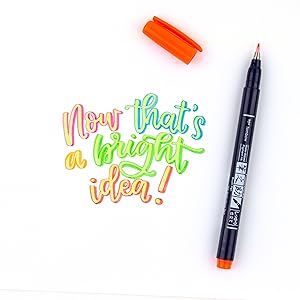
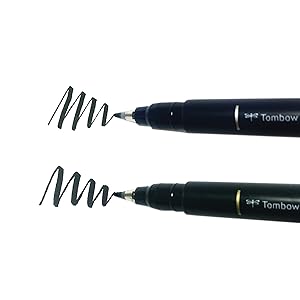
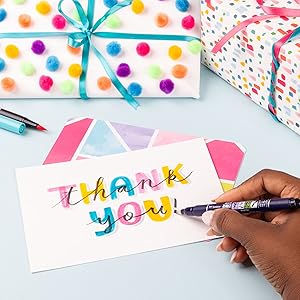
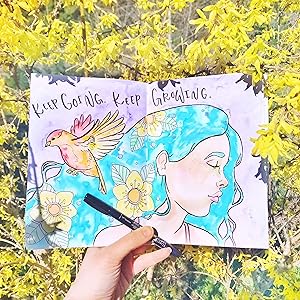
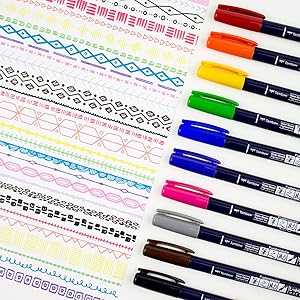
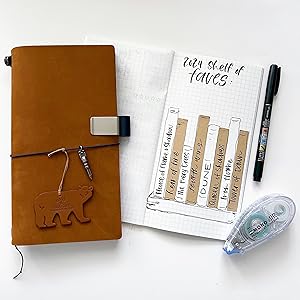
| Manufacturer | Tombow |
| Brand | Tombow |
| Item Weight | 0.705 ounces |
| Product Dimensions | 5.31 x 0.04 x 0.16 inches |
| Item model number | 62038 |
| Is Discontinued By Manufacturer | No |
| Color | Black |
| Closure | Retractable |
| Grip Type | thumb grip |
| Pencil Lead Degree (Hardness) | B |
| Material Type | Polypropylene Plastic |
| Size | 2 Count (Pack of 1) |
| Point Type | extra fine,fine,medium |
| Line Size | 0.5 millimeters |
| Ink Color | Black |
| Manufacturer Part Number | 62038 |
N**I
Great for Learning Brush Lettering!
I’ve just recently started to teach myself brush lettering and these pens are great for that! I started off getting the Tombow Dual Brush Pen Art Markers, Primary, 10-Pack but was having a hard time trying to adjust to holding the grip while also remembering to do thin upstrokes and hard downstrokes because of their very soft brush marker tip. I thought I would get something for brush lettering that had more of a pen-like feel so that I could get the motion down, and that’s when I came across the Tombow Fudenosuke pens.Now if you haven’t used these before, I would highly, highly recommend getting this pack of both the hard and soft nib! At first, I was leaning towards getting the hard nib pen but after reading several reviews, the opinions on hard vs. soft were everywhere making me unsure whether or not I was getting the right product for what I needed. I’m really glad I decided to go with this pack because now after having them for a while I can definitely say I prefer the soft tip! It just requires such minimal effort to get fine strokes and hard strokes.Both pens feature great pointed nibs that excel at writing the finest lines with light pressure and fabulous, bold lines with hard pressure. The difference between them is hard to explain. For brush lettering, I think if you have a tendency to write harder and with more pressure in general, you’ll like the hard tip. If you tend to write with lighter pressure like I do, the soft nib is the way to go! The soft tip isn’t too spongy so you can control it around your curves and gives great buttery, bold strokes without needing to exert too much pressure. The hard tip is a little more stiff and I find that if you don’t differentiate between light and hard pressure it’s easy to just write with consistent line width.The hard tip is the dark blue pen with the green Japanese symbol on it and the soft tip is a very dark green pen with the light blue Japanese symbol on it. Both pens have black, watercolor ink. I’ve attached a picture showing how they differ in writing!
A**R
Love these pens
I love this brand! These pens are amazing! I have their marker pens too and absolutely love them!
K**A
YES
The simplest and best calligraphy pen I have found and at a superb price. I have tried a few times over the years to get into calligraphy, but struggled to find a good pen that actually makes it simple. I absolutely would order this again.
J**T
Overall great pens but I'm not sure if they're worth the money.
Overall great pens but I'm not sure if they're worth the money.WHY I BOUGHT THEM:I hand write a lot of postcards as part of my job. In order to keep my job more bearable I decided to make writing addresses a little more fun by researching interesting pens that could also hold up on glossy-coated postcards as they travel in potentially rainy/snowy environments. I purchased a variety of pens with these two among them. I did not buy these pens to test them for any artistic purpose outside of handwriting/calligraphy. I mostly wanted something that enhances my personal handwriting, rather than mimicking a particular script or style.OTHER PENS I TRIED:These are mostly apples to oranges, I'm afraid... "Artistic" pens I tried include the Pigma Graphic 2, Platinum Calligraphy Fude, and the Kuretake #40. Normal pens I tried include Papermate PMOP (felt/nylon tip markers of various widths), Sharpie brush tip, Uni-Ball Vision, Papermate Gel 0.7, and various horrible ball-points.PROS:- great ink flow and coverage- writes smoothly- the black is nice and rich and opaque. You REALLY have to look to see where cross strokes make the ink a little bit darker.- ink dries quickly. A lefty like me doesn't have to worry about smudging on regular paper and I have to take minimal care not to smudge on the glossy postcards- I can write on the glossy postcard, let the ink dry for about 30 seconds, lick my finger, and then attempt to smudge the ink. It DOES smear slightly, but not enough to ruin the readability of the address. Artists that need waterproof ink probably wouldn't be pleased but I am not afraid to send the postcards into the rain. Other artists may see this as an opportunity to create specific (eg, windblown) effects. It is something that can be played with.- the tips retain their shape and hold up wellCONS:- when writing on regular, printer paper, the faster you write, the more the ink turns from black to gray. Personally, I enjoy the variety but I can imagine some of you artists wouldn't appreciate it- the cost. IMO they are pretty expensive for disposable pens.SOFT VS HARD TIPS:Obviously this is largely personal preference, but I can see myself grabbing for a particular tip depending on what I need. In short: if I'm writing notes or don't necessarily want an obvious calligraphy appeal, I reach for the hard tip. For the postcards or otherwise most artistic endeavors I reach for the soft tip. Here is more detail:The hard tip has a nice, fine line that if you use (it the way Archer wants you to try it) just the tip, varies in thickness from 0.5mm to 1.0mm. You can get up to 1.5mm if you angle the pen and use the tip's edge. The ease at which I can write with this pen and create a rich, high-contrast black on paper makes this pen ideal for writing notes. Details and counters are crisp, even at small x-heights. However, you really have to slow things down and press extra firmly to really get the most of any calligraphy effect. In practice and results, it is not much different from the PMOP on normal paper except that it writes more smoothly and dries quickly enough that it doesn't smear. The PMOP is scratchy and smears easily in comparison. The firmness required to change widths results in a very forgiving experience.If you're looking for calligraphy or drawing with more variation in strokes and with less effort, I think you'll prefer the soft tip. Using just the tip results in less than 0.5mm to just over 1.0mm. Using the side of the tip will give you a stroke at just over 2mm. The main difference between the hard and soft is that the soft will result in bolder lines with much less effort. Lettering quickly (eg, writing notes) can result in some sloppy letter forms, but with very little practice and a slower pace you can come up with some very nice results. It is mostly forgiving and a great beginner's calligraphy pen. While the pen tip MOSTLY retains its shape, giving you consistently thin strokes throughout its lifetime, the tip will eventually want to bend, which can lead to the tip flopping when changing directions. This can lead to unwanted thickness/variance. This usually happens if you're being careless. Maintaining good calligraphy practices shouldn't make this a problem, but the hard tip doesn't have this issue at all, allowing you to write much more quickly.You can create tapers of less than 0.5mm if you create the stroke quickly with either tip. I find it easier to do so with the hard tip but more dramatically noticeable with the soft.LONGEVITY:Mine are still going strong but they don't see daily use. I've practiced my handwriting across multiple pages of regular lined paper, many scrap pieces of paper, and have hand-lettered maybe 100-200 postcards. Mine have not leaked, but reports of short-lived pens or leaking pens are part of why I have some concern over their value.RESULTS:These pens are almost perfect for my intended use. I'd love for them to be 100% waterproof but these are the best pens that I have tried so far for my intended purpose. I love the pens but am not sure if I'd be willing to shell out the money to buy them again. They're easy, a lot of fun, a joy to write with, but don't outperform other pens enough to justify the cost. I'd love to see Tombow create a refillable version.OTHER NOTES:I'll point out that you can currently get these two pens separately from one another for cheaper, even if you buy them individually (the hard tip can currently be found for just under five dollars and the soft is under three and a quarter). They also come come in 3, 5, 10, etc. packs where the value is (sometimes) better.Mine came with the rectangular plastic cards that other reviews mentioned. I think I threw them out as I have no expectation of ever using any pen to write any form of Asian calligraphy.I can't comment on how well the pens write on various artistic media. I can only comment on basic paper and glossy postcard stock.I ordered from "jpngoodies" with standard shipping and it took 9 days from order to arrival.
L**N
Perfect!
I use a planner, and I like to black out tasks that are complete so I don't confuse them with pending tasks. I hate looking at them with just a checkmark or a strikeout with pen, because my brain keeps rereading tasks that I've completed and can't find/focus on the pending ones, and the list feels necessarily long. Anyway, these are beautiful, within one hour my life has dramatically improved hHaha because I was using sharpie before but it would ruin the next page by bleeding through. These do NOT bleed through, not even at all, it's insane and I don't know how it can black things out without doing that. See pics, I showed where you can't see through at all. Also, the pen works nice as a regular hard tip if you hold it straight. Great, I will seriously be buying these forever
D**S
Great pens!
These are some of the best pens I've ever used. The lines are thin but thick enough for smaller size brush lettering. There's a soft tip and a hard tip and the ink seems to last forever. Great value!
R**A
¡Increíble marcador para caligrafía y lettering!
¡Ufff! Qué buen marcador. El Tombow Fudenosuke superó todas mis expectativas. Tiene una punta firme pero flexible, lo que permite un control excelente del trazo y hace que el lettering sea suave, limpio y muy preciso.Ideal tanto para principiantes como para quienes ya tienen experiencia en caligrafía. La tinta es intensa, no traspasa el papel y se seca rápido. ¡Me encantó!Definitivamente compraré más. Muy, muy, muy recomendado.
Trustpilot
2 weeks ago
2 weeks ago